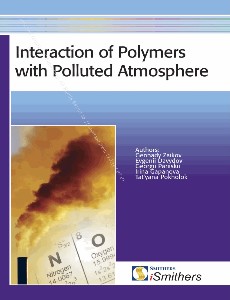Nitrogen oxides are common by-products of fossil fuels combustion and are one of the most important types of air pollution. The nitric oxides react with UV radiation to form oxides of nitrogen, ozones and acids. The nitrogen oxides can have considerable impact of the life of polymers in the environment and can be responsible for failure of polymer products, so it is important to know how these effects will be manifest. Most of the earlier studies of the effect of nitrogen oxides on polymeric materials have involved the determination of changes in the average molecular weight and mechanical properties, as well as changes in chemical structure using infrared spectroscopy. However, these characteristics provide no direct information on the mechanism of intermediate stages of the complicated processes of polymer degradation under the action of these aggressive gases. In this book, novel results obtained by other physicochemical methods especially electron spin resonance spectroscopy are considered for various polymers. The influence of different functional groups on the mechanism of interaction of nitrogen oxides with polymers are discussed. The features of ion-radical initiation of conversions of polymers by dimers of nitrogen dioxide are also considered. Various other techniques for studying these interactions are also discussed. This handbook will be of interest to all those who produce polymer products that are likely to spend their life in an outdoors environment. It will also be useful to the manufacturers of raw materials used in these products. Technicians who are involved in material testing will also find a wealth of information about testing for the effects of ozone on polymers.
< หน้าหลัก / หนังสืออิเล็กทรอนิกส์ / Interaction of polymers with polluted atmosphere nitrogen oxides >
Interaction of polymers with polluted atmosphere nitrogen oxides

เนื้อหาอย่างย่อ
หมวด: Textbook - โพลีเมอร์ พลาสติกและยาง

.png)
.png)
.png)